Key takeaways:
- Sustainability in floristry involves more than eco-friendly materials; it encompasses the entire lifecycle of floral products and supporting local growers.
- Choosing sustainable flowers reduces carbon emissions, supports ethical farming, and fosters community connections, enhancing both environmental and economic health.
- Implementing eco-friendly practices like biodegradable packaging and composting floral waste creates a positive impact on the environment.
- Customer education through conversations, workshops, and social media is vital for raising awareness and promoting sustainable choices in floristry.

Understanding sustainability in floristry
Sustainability in floristry goes beyond just using eco-friendly materials; it’s about considering the entire lifecycle of floral products. I remember attending a workshop where a florist shared that every stem has a story— from how it’s grown to how it arrives in our hands. Doesn’t it make you wonder how much thought we put into where our flowers come from?
When I began my journey in floristry, I was surprised to learn just how much waste the industry generates. For example, the packaging alone can add up quickly—things like plastic wraps and foam can harm our environment. I often find myself questioning how we can create stunning arrangements while also respecting our planet. It’s about striking a balance, isn’t it?
In my opinion, supporting local growers is a pivotal part of sustainable floristry. Sourcing blooms that are in season not only reduces carbon footprints but also boosts local economies. Have you ever felt that deep connection when you bring home flowers that were grown just a few miles away? It’s a small act that can make a big difference, both visually and environmentally.
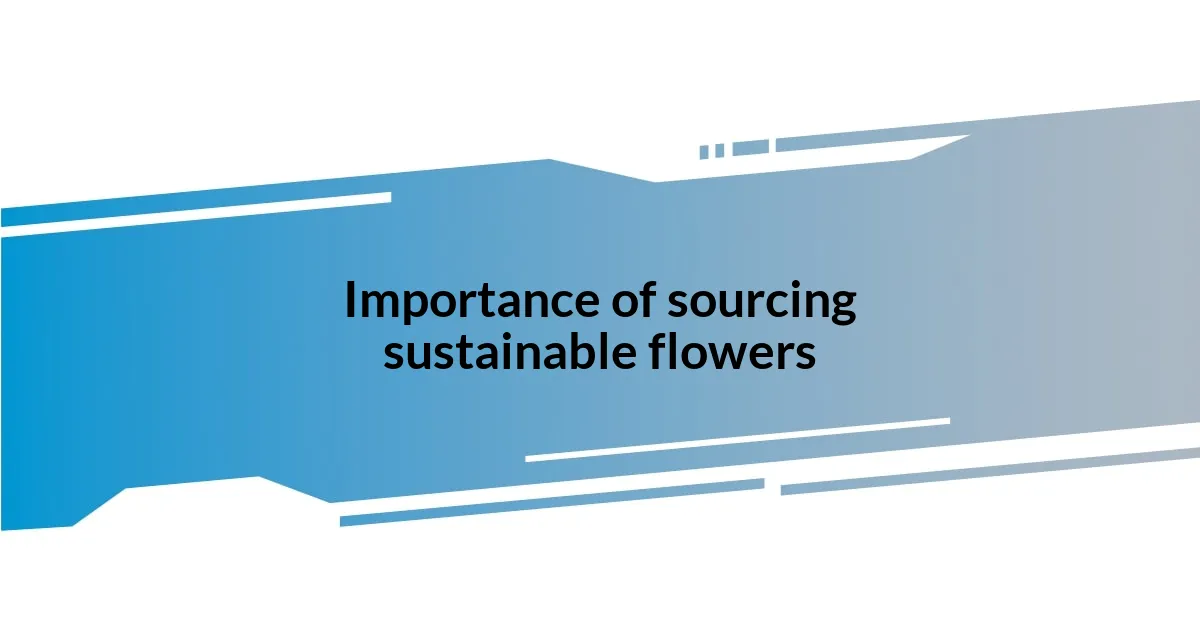
Importance of sourcing sustainable flowers
Sourcing sustainable flowers is crucial because it embraces the principle of environmental stewardship. I’ve learned that flowers treated with harsh chemicals not only affect our health but can also devastate local ecosystems. I still remember visiting a sunflower farm where the owner spoke passionately about avoiding pesticides and how that decision fostered a thriving habitat for bees and other pollinators. Knowing that our choice of flowers can directly support biodiversity brings such a sense of responsibility.
When we source sustainably, we are taking tangible steps to protect the planet. Here are a few key reasons why it matters:
- Reduces carbon emissions from transportation by opting for local suppliers.
- Supports ethical farming practices that prioritize labor rights and environmental health.
- Preserves the beauty of rural landscapes by encouraging local agricultural practices.
- Fosters a connection between consumers and growers, cultivating a community around shared values.
- Enhances the freshness and longevity of the flowers due to their shorter travel distance.
Simple actions like choosing sustainable flowers can lead to a more vibrant environment. Each bouquet can echo the love and care that went into its growing process, and that’s truly beautiful.
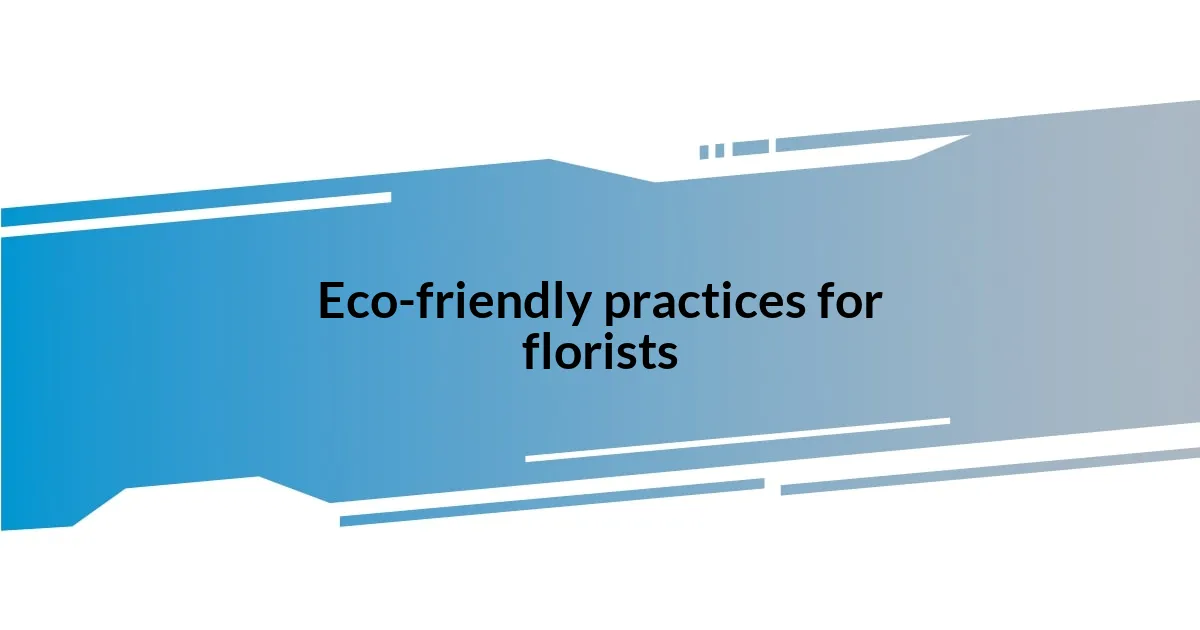
Eco-friendly practices for florists
Eco-friendly practices for florists extend beyond merely choosing sustainable flowers; they encompass a whole ecosystem of choices that can create a positive impact. One of the practices I hold dear is utilizing biodegradable materials for packaging. I remember the gleam in a customer’s eyes when I presented a bouquet wrapped in kraft paper instead of plastic. That moment reminded me of how something as simple as our packaging could resonate and help shift perceptions about sustainability. Don’t you think it’s wonderful when our choices make a statement?
Another effective practice is composting floral waste, which can significantly reduce landfill contributions. I still recall my first attempt at composting leftover stems and wilted blooms. It felt like a small victory, watching what was once waste turn into nutrient-rich soil—a reassuring circle of life! I’ve often found meaningful joy in seeing my garden flourish thanks to that compost, and it’s a gratifying feeling knowing I’m giving back to the earth. How about you—do you have a spot in your garden waiting for some natural boost?
Additionally, opting for seasonal and regional flowers not only supports the local economy but also aligns perfectly with eco-friendly practices. I’ve had the privilege of attending farmers’ markets and picking up flowers that were in full bloom that week—there’s something so magical about that fresh, vibrant energy. It makes a gorgeous arrangement feel even more special and alive. In your experience, haven’t you felt that a locally sourced bouquet holds a certain charm that ones shipped from afar just can’t replicate?
| Practice | Description |
|---|---|
| Biodegradable Packaging | Using materials that break down naturally, minimizing plastic waste. |
| Composting | Transforming floral waste into fertilizer to enrich soil and reduce landfill use. |
| Seasonal Sourcing | Choosing flowers that are in bloom locally to support the environment and economy. |
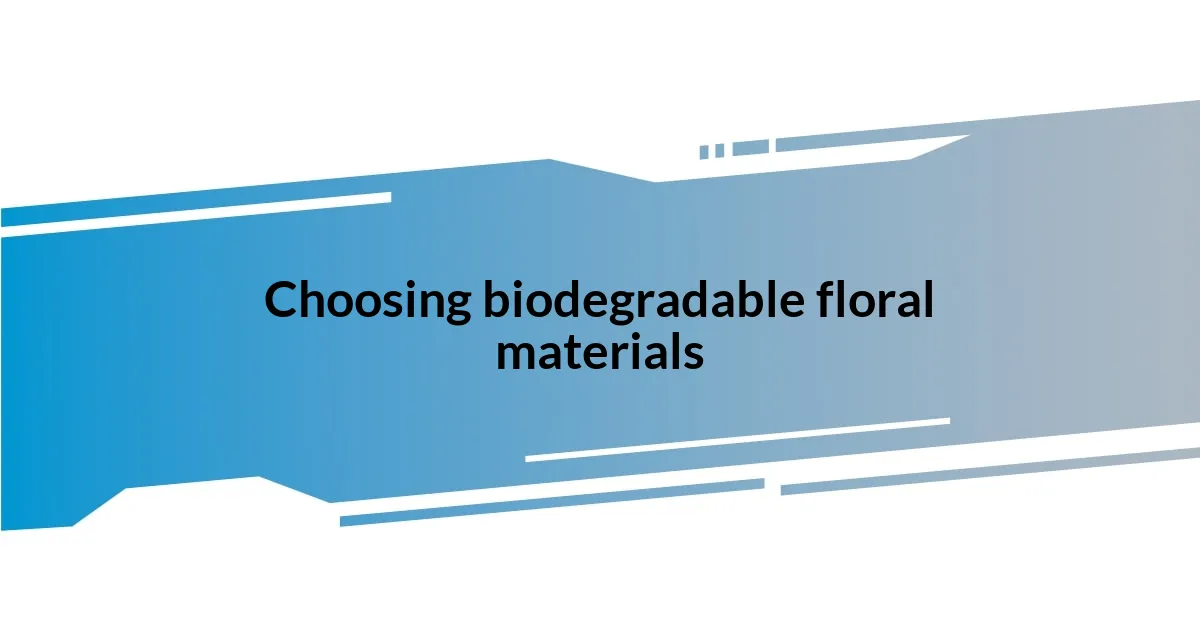
Choosing biodegradable floral materials
Choosing biodegradable floral materials is an important step in reducing our environmental footprint. I remember the first time I switched from plastic ribbons to jute twine for tying bouquets. It felt good knowing that, unlike plastic, my choice wouldn’t end up lingering in a landfill for centuries. It’s a simple detail, but those small changes can add up to a significant impact—don’t you think?
When it comes to selecting biodegradable options, the variety can be surprisingly vast. I’ve found that using natural materials like cotton or hemp not only elevates the aesthetic of floral arrangements but also resonates with eco-conscious clients. Just the other day, a bride expressed her gratitude for using biodegradable confetti made from dried flower petals instead of synthetic options. Those moments of connection reinforce my belief that choosing biodegradable materials fosters a deeper bond with our customers and the planet.
The emotional satisfaction derived from using biodegradable floral materials is profound. I often think about how a wedding bouquet, once wilting and discarded, can decompose harmoniously back into the earth. This idea of returning to nature resonates with me deeply. It’s fulfilling to know we’re contributing to sustainability while still celebrating life’s beautiful moments. Isn’t it magical to turn something temporary into a nurturing element for nature?
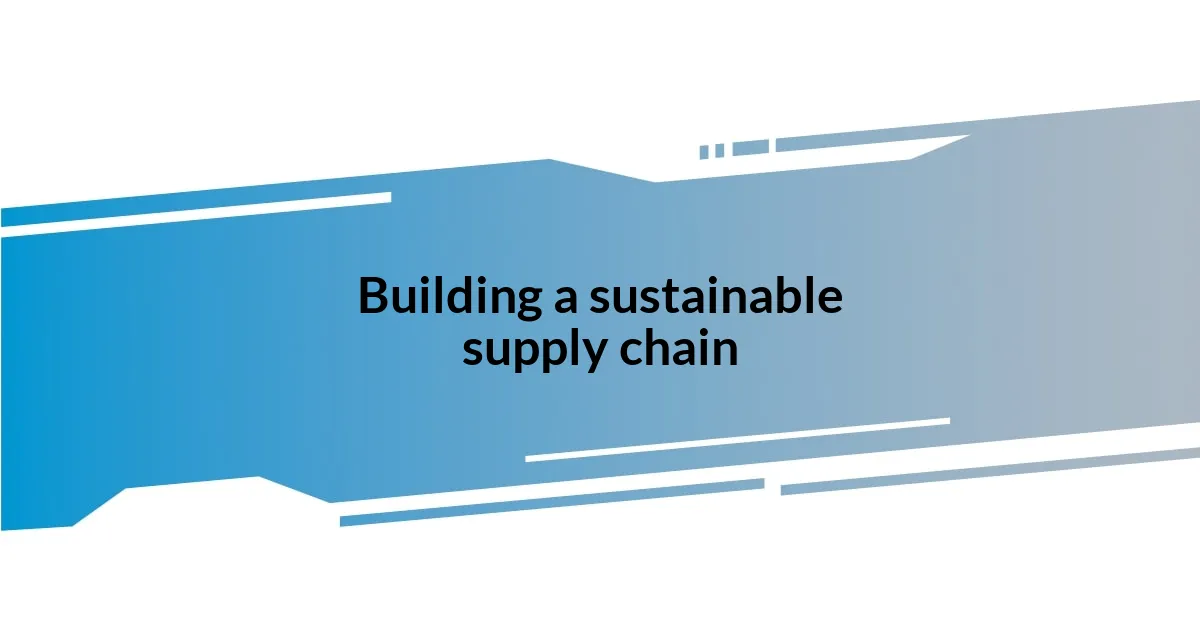
Building a sustainable supply chain
Building a sustainable supply chain in floristry starts with forming meaningful relationships with local growers. I remember a time when I visited a nearby flower farm; it was incredible to see the dedication and care that went into each bloom. Establishing a direct connection with these producers allows me to ensure my flowers are not only fresh but also grown using sustainable practices. Have you ever considered how much more impactful your work could be by supporting local farmers directly?
Moreover, investing in efficient transportation methods can further minimize our environmental footprint. I once engaged a delivery service that used electric vehicles, which surprisingly boosted my business’s image while also aligning with my values. It’s fascinating how these eco-conscious choices can spark conversations with clients who appreciate knowing their flowers traveled a shorter distance. What types of initiatives have you encountered in your own experience that promote eco-friendly logistics?
Lastly, transparency in sourcing is vital for building trust with customers. I’ve found that sharing the story behind each arrangement, from grower to client, resonates profoundly with people. When I inform customers that their bouquet comes from an organic farm just a few miles away, their eyes light up. It feels rewarding to engage in a dialogue about sustainability while empowering consumers to make informed choices. Isn’t it empowering to know that every small choice can lead to broader change in our industry?
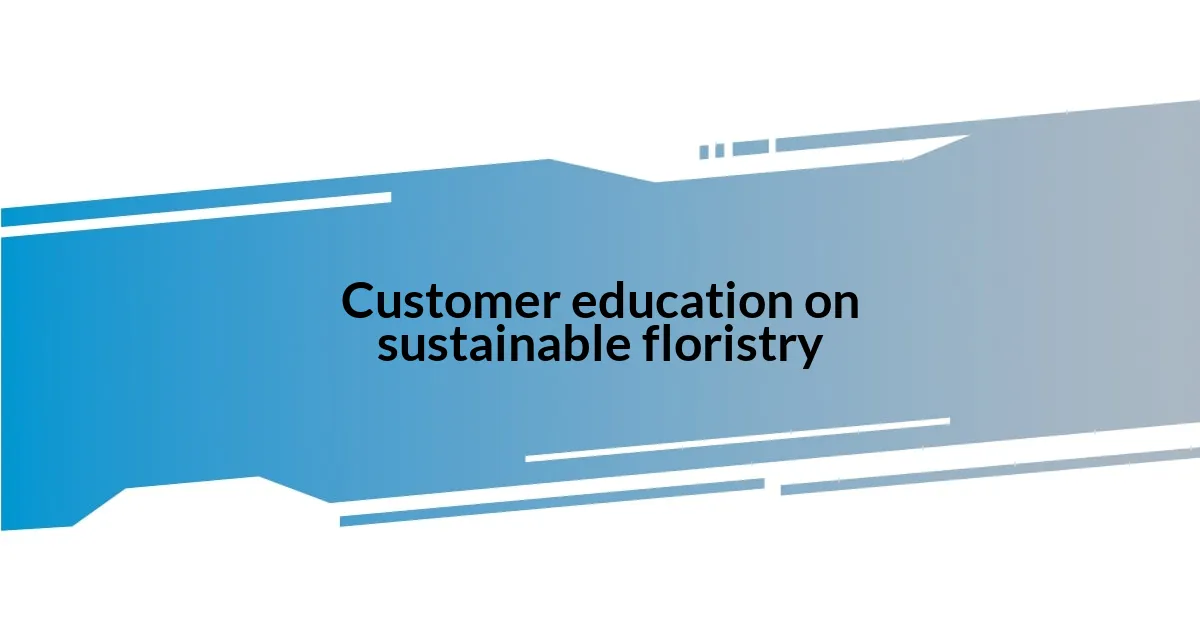
Customer education on sustainable floristry
One of the most effective ways to educate customers about sustainable floristry is through engaging conversations during the buying process. I remember chatting with a couple while they browsed arrangements, and as we discussed the importance of seasonal blooms, their interest piqued. By explaining how local flowers not only reduce carbon emissions from transportation but also support our community, I saw their perspective shift. Have you noticed how impactful a simple conversation can be in changing someone’s awareness?
Workshops can also serve as powerful platforms for customer education. I started hosting small gatherings where I demonstrate how to make sustainable arrangements using eco-friendly materials. The enthusiasm of participants when they realize they can create beauty without sacrificing their values is truly inspiring. What’s fascinating is their eagerness to share this knowledge with others, turning them into ambassadors for sustainability. Isn’t it wonderful how learning together can foster a sense of community around eco-conscious choices?
Additionally, social media offers a fantastic avenue to spread awareness. I often share posts highlighting the journey of our flowers—from the local farm to the final arrangement. One time, a follower reached out to express how much it changed her view on floristry. It’s moments like these that reaffirm my belief in the power of visual storytelling. How often do you encounter content that resonates so powerfully with your values? It’s a joyful reminder that we all play a role in this movement towards sustainability.